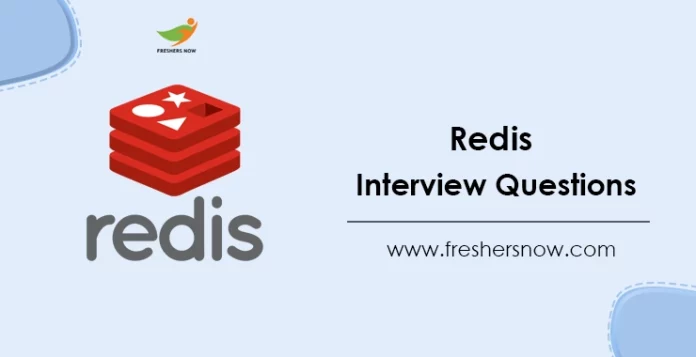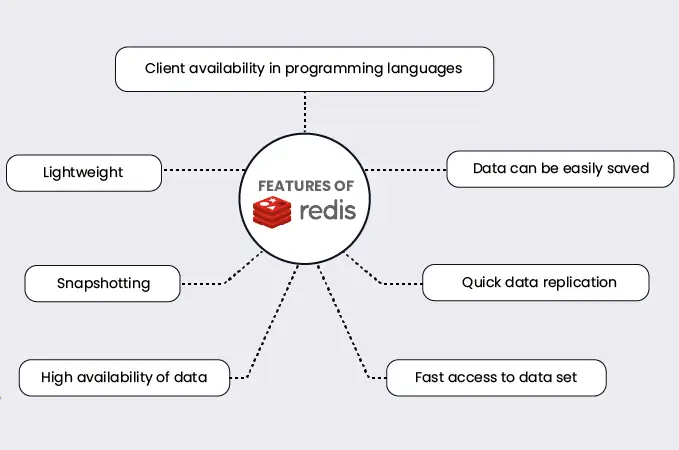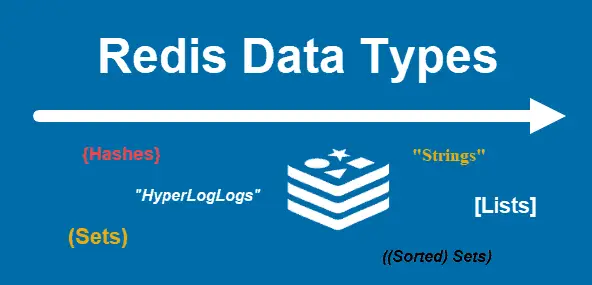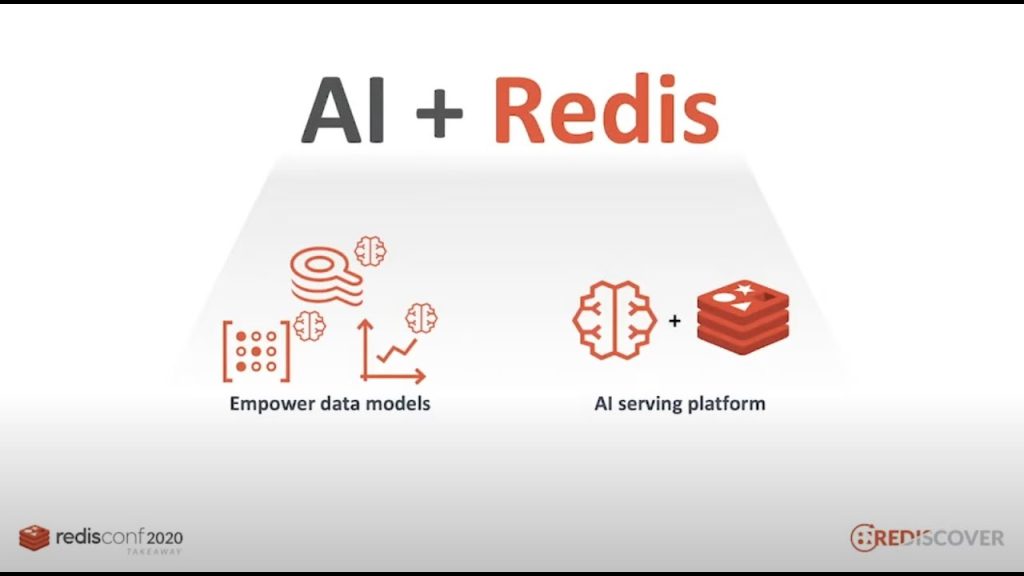
Redis Interview Questions and Answers: Redis is an open-source, in-memory data structure store that is widely used as a database, cache, and message broker. It is a popular choice for high-performance, real-time applications that require fast data access and low latency. To help you prepare for your Redis technical interview, we have compiled a list of the top 100 Redis interview questions and answers. These questions cover a range of topics, from basic Redis concepts to more advanced topics like data partitioning and replication.
★★ Latest Technical Interview Questions ★★
Redis Technical Interview Questions
Whether you’re a fresh graduate or an experienced developer, our latest Redis interview questions and answers are designed to help you ace your Redis technical interview. So, let’s dive into the Redis interview questions for freshers and experienced developers alike!
Top 100 Redis Interview Questions and Answers
1. What is Redis?
Answer: Redis is an in-memory data structure store that is used as a database, cache, and message broker. It supports various data structures such as strings, hashes, lists, sets, and sorted sets.
2. What are the advantages of using Redis?
Answer: Redis offers high performance, scalability, and persistence, and supports multiple data structures.
3. What are the disadvantages/ limitations of using Redis?
Answer:
- Redis operates on a single thread, which may limit its ability to handle heavy workloads.
- The client support for consistent hashing in Redis is limited, which can impact its scalability in certain scenarios.
- Redis has a notable overhead when it comes to persistence, which can lead to higher resource consumption and slower performance.
- Redis adoption is not as widespread as some other database solutions, which may impact its availability of resources and community support.
4. What are the main features of Redis?
Answer:

- Redis has a straightforward installation process and is easy to manage.
- Redis is known for its speed, capable of executing 100,000 queries per second.
- Redis achieves its speed by persisting data in memory while also storing it on disk.
- Redis loads the entire dataset into primary memory, contributing to its fast performance.
- Redis operations on different data types are atomic, ensuring safe execution of tasks like setting keys, adding/removing set elements, and increasing counters.
- Redis supports various data structures including strings, hashes, sets, lists, and sorted sets.
- Redis is compatible with a wide range of programming languages, such as C, C++, C#, Ruby, Python, Twisted Python, PHP, Erlang, Tcl, Perl, Lua, Java, and Scala.
- In case your preferred language is not supported, you can create your own client library since the Redis Protocol is simple.
- Redis facilitates simple master-to-slave replication.
- Redis is portable and can be used across different systems.
5. What are the data structures supported by Redis?
Answer: Redis supports strings, hashes, lists, sets, sorted sets, bitmaps, and hyperloglogs.
6. How is Redis different from traditional databases?
Answer: Redis is an in-memory database, which means it stores data in RAM instead of on disk. This makes Redis extremely fast and efficient for use cases that require quick data access.
7. What is the syntax for setting a key-value pair in Redis?
Answer: The syntax for setting a key-value pair in Redis is as follows: SET key value
8. What is the role of Redis in caching?
Answer: Redis is used as a cache because it stores data in memory, making it very fast to access. It also supports various data structures that can be used for caching purposes.
9. How does Redis handle data persistence?
Answer: Redis offers several mechanisms for data persistence, including snapshotting, append-only files, and a combination of both.
10. What is the difference between snapshotting and append-only files in Redis?
Answer: Snapshotting involves taking a snapshot of the database at regular intervals and storing it on disk. Append-only files, on the other hand, record every write operation to a log file, ensuring that no data is lost in case of a crash.
11. How does Redis handle replication?
Answer: Redis uses a master-slave replication model, where the master node is responsible for writing data and the slave nodes replicate that data.
12. What are the differences between Redis and RDBMS?
Answer:
| Criteria | Redis | RDBMS |
|---|---|---|
| Data storage | Stores data in memory, with optional disk persistence | Stores data on disk |
| Data model | Supports a key-value data model and various data structures such as strings, hashes, sets, lists, and sorted sets | Supports a relational data model with tables, columns, and rows |
| ACID compliance | Does not guarantee ACID compliance, but offers some ACID-like guarantees | Generally supports full ACID compliance |
| Concurrency control | Uses a single-threaded architecture, which can limit its concurrency capabilities | Supports multi-threading, allowing for greater concurrency |
| Performance | Offers high performance due to its in-memory storage and efficient data structures, capable of processing hundreds of thousands of requests per second | Performance may be impacted by disk I/O and relational data modeling |
| Scalability | Can scale horizontally through sharding or replication | Can scale vertically through hardware upgrades or partitioning |
| Use cases | Ideal for real-time applications and scenarios where high throughput is required | Suitable for applications with complex data structures and relationships, as well as batch processing and reporting |
| Query language | Offers a limited set of commands and does not support SQL | Typically supports SQL or a similar query language |
| Cost | Open-source version is available for free, with paid options for enterprise-level features | Often requires paid licenses and ongoing maintenance costs |
13. What is the role of Redis in messaging systems?
Answer: Redis is used as a message broker in messaging systems, allowing different services to communicate with each other asynchronously.
14. How does Redis support pub/sub messaging?
Answer: Redis provides a pub/sub messaging model, where publishers send messages to channels and subscribers receive those messages.
15. How do you retrieve the value of a key in Redis?
Answer: To retrieve the value of a key in Redis, use the following syntax: GET key
16. What is Redis Lua scripting?
Answer: Redis Lua scripting is a feature that allows developers to write custom scripts that can be executed by Redis.
17. What are the differences between Memcached and Redis?
Answer:
| Criteria | Memcached | Redis |
|---|---|---|
| Data Storage | Simple Key-Value Store | Advanced Data Structures (e.g., lists, sets, hashes) |
| Data eviction | LRU (Least Recently Used) | LRU, LFU (Least Frequently Used), Random, TTL (Time-to-Live) |
| Persistence | No built-in persistence | Optional persistence (e.g., snapshots, append-only files) |
| Replication | No built-in replication | Built-in replication |
| Clustering | No built-in clustering | Built-in clustering |
| Data types | Supports only strings | Supports strings, lists, sets, hashes, sorted sets |
| Performance | Faster than Redis for small value sizes, but slower for larger values | Generally slower than Memcached for small value sizes, but faster for larger values |
| Use cases | Caching frequently used data (e.g., web pages, database query results) | Caching, session management, message broker, real-time data processing, job queue |
18. How does Redis Lua scripting improve performance?
Answer: Redis Lua scripting improves performance by reducing the number of round-trips between the client and the server, as well as by allowing for complex operations to be executed on the server-side.
19. How does Redis handle concurrency?
Answer: Redis supports atomic operations, which ensure that multiple operations can be executed simultaneously without interfering with each other.
20. How does Redis Cluster work?
Answer: Redis Cluster is a distributed system that uses sharding to partition data across multiple nodes. Each node is responsible for a subset of the data, and Redis clients can access the cluster as if it were a single server.
21. What is the syntax for deleting a key in Redis?
Answer: The syntax for deleting a key in Redis is as follows: DEL key
22. What are the different data types used in Redis?
Answer: Redis supports 5 different data types:

- Strings
- Hashes
- Lists
- Sets
- Sorted Sets.
These data types can be used to store and manipulate data in various ways, depending on the requirements of the application. Each data type has its own unique characteristics and functionalities that make it suitable for different use cases. Redis is a powerful and versatile database system that can handle a wide range of data types and operations, making it a popular choice for many applications.
23. What are the Operation Keys of Redis?
Answer: Redis supports various operations on keys, which are used to manipulate and manage the data stored in Redis. Some of the key operations supported by Redis include:
- SET: Sets the value of a key
- GET: Retrieves the value of a key
- DEL: Deletes a key and its associated value
- EXISTS: Checks whether a key exists
- KEYS: Returns all keys matching a pattern
- TTL: Returns the time-to-live of a key
- EXPIRE: Sets a time-to-live for a key
- PERSIST: Removes the time-to-live of a key, making it persistent
- RENAME: Renames a key
- TYPE: Returns the data type of a key
These operations can be used to perform various operations on the keys in Redis, allowing developers to efficiently manage their data and perform complex operations on it.
24. How do you get a list of all keys matching a specific pattern in Redis?
Answer: To get a list of all keys matching a specific pattern in Redis, use the following syntax: KEYS pattern
25. What are the advantages of using Redis Cluster?
Answer: Redis Cluster offers high availability, scalability, and fault tolerance.
26. What is the maximum size of data that can be stored in Redis?
Answer: The maximum size of data that can be stored in Redis is limited by the amount of memory available on the system.
27. What is the maximum number of keys that can be stored in Redis?
Answer: The maximum number of keys that can be stored in Redis is limited by the amount of memory available on the system.
28. What is the maximum number of Redis databases that can be created?
Answer: Redis supports up to 16 databases, numbered from 0 to 15.
29. How does Redis handle data eviction?
Answer: Redis supports several mechanisms for data eviction, such as LRU (least recently used) and TTL (time to live) expiration.
30. What is the role of Redis in web applications?
Answer: Redis is used in web applications for caching, session storage, real-time messaging, and other use cases that require high performance and scalability.
31. How does Redis handle transactions?
Answer: Redis supports transactions using the MULTI and EXEC commands, allowing multiple commands to be executed atomically.
32. What is Redis pipelining?
Answer: Redis pipelining is a feature that allows multiple commands to be sent to Redis in a single network round-trip, improving performance and reducing network latency.
33. What is Redis Gears?
Answer: Redis Gears is a serverless engine for processing data in Redis. It allows developers to write custom processing logic using Python or JavaScript and run it in Redis.
34. What is the syntax for incrementing the value of a key in Redis?
Answer: The syntax for incrementing the value of a key in Redis is as follows: INCR key or INCRBY key increment. The first syntax increments the value by 1, while the second syntax allows you to specify the increment amount.
35. How does Redis handle data encryption?
Answer: Redis does not natively support data encryption, but it can be used with external tools such as TLS/SSL or transparent data encryption.
36. How does Redis handle data compression?
Answer: Redis does not natively support data compression, but it can be used with external tools such as gzip or snappy.
37. What is Redisearch?
Answer: Redisearch is a full-text search engine that is built on top of Redis. It provides fast and efficient search capabilities for Redis data.
38. What is RedisJSON?
Answer: RedisJSON is a module for Redis that allows developers to store, manipulate, and query JSON data.
39. How does Redis handle data backup and recovery?
Answer: Redis supports several mechanisms for data backup and recovery, including snapshotting, append-only files, and replication.
40. What is RedisBloom?
Answer: RedisBloom is a module for Redis that provides probabilistic data structures such as Bloom filters and HyperLogLog.
41. What is RedisTimeSeries?
Answer: RedisTimeSeries is a module for Redis that provides time-series data functionality. It allows developers to store, manipulate, and query time-series data.
42. How does Redis handle high traffic loads?
Answer: Redis is designed to handle high traffic loads by using an event-driven architecture and non-blocking I/O.
43. What is the role of Redis in microservices architectures?
Answer: Redis is used in microservices architectures for caching, message brokering, and other use cases that require fast and efficient data access.
44. How does Redis handle data serialization?
Answer: Redis supports several data serialization formats, including JSON, Msgpack, and Protobuf.
45. What is RedisGraphQL?
Answer: RedisGraphQL is a module for Redis that provides GraphQL functionality. It allows developers to query Redis data using the GraphQL query language.
46. What is the role of Redis in real-time analytics?
Answer: Redis is used in real-time analytics for data caching, aggregation, and processing.
47. What is RedisGearsML?
Answer: RedisGearsML is a module for RedisGears that provides machine learning functionality. It allows developers to train and deploy ML models directly in Redis.
48. How does Redis handle data versioning?
Answer: Redis does not natively support data versioning, but it can be implemented using custom scripts and data structures.
49. What is RedisCluster?
Answer: RedisCluster is a feature of Redis that allows multiple Redis nodes to work together as a single logical database.
50. What is the role of Redis in mobile applications?
Answer: Redis is used in mobile applications for caching, session storage, and real-time messaging.
51. What is Redis Sentinel?
Answer: Redis Sentinel is a feature of Redis that provides high availability and automatic failover in a Redis cluster.
52. What is the role of Redis in gaming applications?
Answer: Redis is used in gaming applications for real-time data processing, caching, and matchmaking.
53. What is RedisTrib?
Answer: RedisTrib is a Redis utility that provides a command-line interface for managing Redis clusters.
54. What is RedisGraphAI?
Answer: RedisGraphAI is a module for Redis that provides graph algorithms and analytics functionality.
55. How does Redis handle concurrent access to data?
Answer: Redis uses a single-threaded model and atomic operations to ensure safe concurrent access to data.
56. What is RedisLive?
Answer: RedisLive is a web-based monitoring tool for Redis that provides real-time performance metrics and visualization.
57. What is the role of Redis in financial applications?
Answer: Redis is used in financial applications for real-time data processing, caching, and fraud detection.
58. What is RedisAI-PyTorch?
Answer: RedisAI-PyTorch is a module for RedisAI that provides PyTorch-based machine learning functionality.
59. What is RedisFailover?
Answer: RedisFailover is a Redis utility that provides automated failover and recovery in a Redis cluster.
60. What is the role of Redis in logistics and transportation applications?
Answer: Redis is used in logistics and transportation applications for real-time data processing, caching, and route optimization.
61. What is RedisJSONAI?
Answer: RedisJSONAI is a module for Redis that provides machine learning functionality for JSON data.
62. What is the role of Redis in media and entertainment applications?
Answer: Redis is used in media and entertainment applications for real-time data processing, caching, and content recommendation.
63. What is RedisRate?
Answer: RedisRate is a Redis module that provides rate-limiting functionality for APIs and web applications.
64. What is the role of Redis in healthcare applications?
Answer: Redis is used in healthcare applications for real-time data processing, caching, and patient monitoring.
65. What is RedisSearchAI?
Answer: RedisSearchAI is a module for Redis that provides AI-powered search capabilities.
66. What is the role of Redis in social media applications?
Answer: Redis is used in social media applications for real-time data processing, caching, and content recommendation.
67. What is RedisCell?
Answer: RedisCell is a Redis module that provides cell-based rate-limiting functionality for APIs and web applications.
68. What is the role of Redis in advertising applications?
Answer: Redis is used in advertising applications for real-time data processing, caching, and ad targeting.
69. What is RedisStreams?
Answer: RedisStreams is a feature of Redis that provides scalable, real-time message streaming and processing.
70. What is the role of Redis in education applications?
Answer: Redis is used in education applications for real-time data processing, caching, and student performance analysis.
71. What is RedisGearsPy?
Answer: RedisGearsPy is a module for RedisGears that provides Python-based data processing and automation functionality.
72. What is the role of Redis in IoT applications?
Answer: Redis is used in IoT applications for real-time data processing, caching, and device management.
73. What is the role of Redis in marketing applications?
Answer: Redis is used in marketing applications for real-time data processing, caching, and customer segmentation.
74. What is RedisGears?
Answer: RedisGears is a module for Redis that provides distributed data processing and automation functionality.
75. What is the role of Redis in energy applications?
Answer: Redis is used in energy applications for real-time data processing, caching, and energy consumption monitoring.
76. What is the role of Redis in telecommunications applications?
Answer: Redis is used in telecommunications applications for real-time data processing, caching, and network optimization.
77. What is RedisEdge?
Answer: RedisEdge is a module for Redis that provides edge computing and IoT functionality.
78. What is the role of Redis in travel applications?
Answer: Redis is used in travel applications for real-time data processing, caching, and itinerary optimization.
79. What is RedisGraph?
Answer: RedisGraph is a module for Redis that provides graph data storage and analysis.
80. What is the role of Redis in sports applications?
Answer: Redis is used in sports applications for real-time data processing, caching, and player performance analysis.
v
81. What is RedisModulesSDK?
Answer: RedisModulesSDK is a toolkit for developing Redis modules in C.
82. What is the role of Redis in weather applications?
Answer: Redis is used in weather applications for real-time data processing, caching, and weather forecasting.
83. What is RedisTimeFlow?
Answer: RedisTimeFlow is a module for RedisTimeSeries that provides anomaly detection and forecasting functionality.
84. What is the role of Redis in government applications?
Answer: Redis is used in government applications for real-time data processing, caching, and citizen service optimization.
85. What is RedisCuckooFilter?
Answer: RedisCuckooFilter is a module for RedisBloom that provides efficient set membership testing.
86. What is the role of Redis in agriculture applications?
Answer: Redis is used in agriculture applications for real-time data processing, caching, and crop management.
87. What is RedisAI?
Answer: RedisAI is a module for Redis that provides machine learning and deep learning functionality.

88. What is the role of Redis in manufacturing applications?
Answer: Redis is used in manufacturing applications for real-time data processing, caching, and quality control.
89. What is RedisRaft?
Answer: RedisRaft is a Redis module that provides distributed consensus and replication functionality.
90. What is the role of Redis in logistics applications?
Answer: Redis is used in logistics applications for real-time data processing, caching, and shipment tracking.
91. What is RedisBLS?
Answer: RedisBLS is a module for RedisBloom that provides scalable, high-performance Bloom filters.
92. What is the role of Redis in gaming backend services?
Answer: Redis is used in gaming backend services for real-time data processing, caching, and matchmaking.
93. What is RedisGearsPyTorch?
Answer: RedisGearsPyTorch is a module for RedisGears that provides PyTorch-based machine learning functionality.
94. What is the role of Redis in insurance applications?
Answer: Redis is used in insurance applications for real-time data processing, caching, and claims management.
95. What is RedisSearch?
Answer: RedisSearch is a module for Redis that provides full-text search functionality.
96. What is the role of Redis in e-commerce applications?
Answer: Redis is used in e-commerce applications for real-time data processing, caching, and product recommendations.
97. What is RedisBench?
Answer: RedisBench is a benchmarking tool for Redis that measures its performance.
98. What is RedisLabs?
Answer: RedisLabs is a cloud-based service that provides managed Redis instances and enterprise-grade features.
99. What is the role of Redis in media applications?
Answer: Redis is used in media applications for real-time data processing, caching, and content delivery optimization.
100. What is RedisInsight?
Answer: RedisInsight is a web-based GUI for Redis that provides monitoring, debugging, and performance analysis functionality.
The Top 100 Redis Interview Questions and Answers cover a range of Redis concepts and advanced topics, designed to help freshers and experienced developers ace their technical interviews. Join us at freshersnow.com to expand your knowledge and stay updated.



